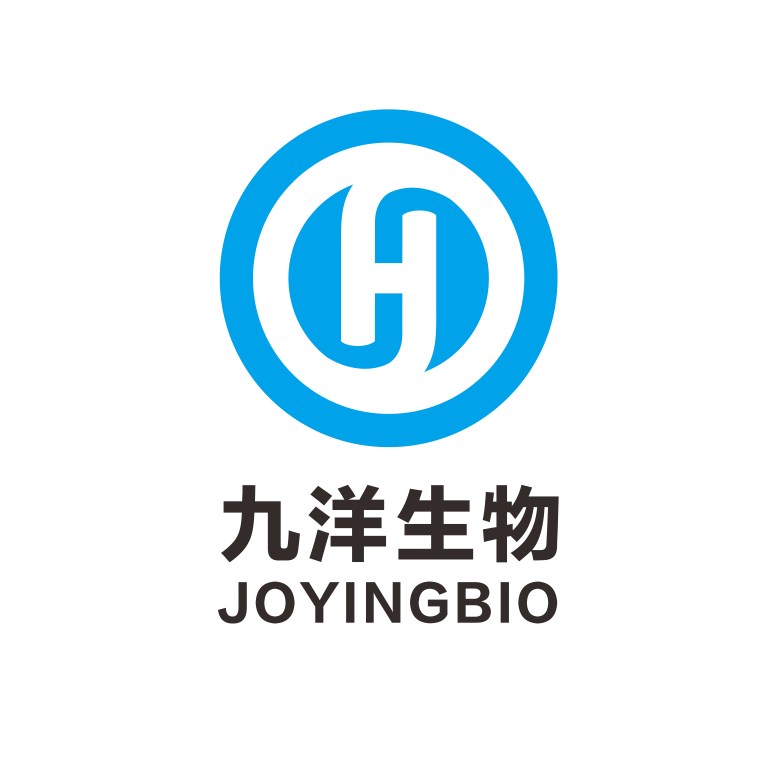Reagent and Consumables
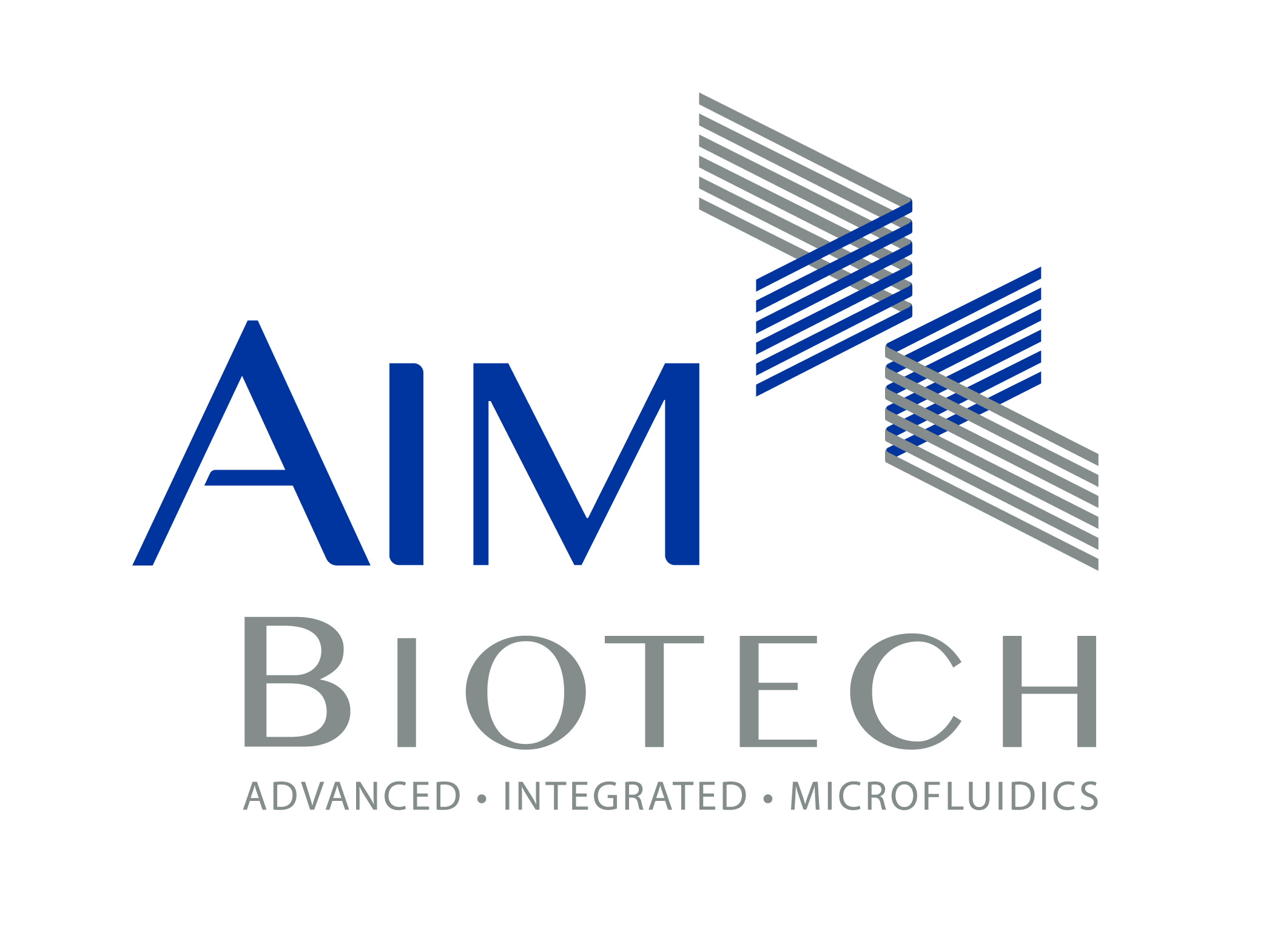
Introduction
AIM BIOTECH is an entrepreneurial company which specializing in development of innovative tools in Singapore, it covering scientific research, drug development and clinical diagnostics. AIM BIOTEC's first contribution to research market was that developed an easy-to-operate, modular platform. This platform successfully incorporated 3D cell into researchers’ research work.
Description
AIM's 3D cell culture chip is breathable, and users can culture different types of cells in spaced 3D and 2D by selecting different hydrogels. At the same time, microenvironment meets specific needs of users, it can be well simulated through the regulation of chemical concentration gradients and fluids.
Characteristics
1. Diversified polymer gel filling
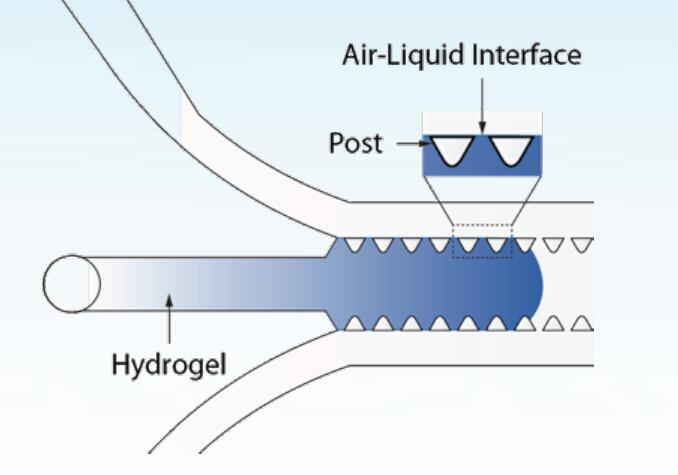
Gel channel can be filled with collagen, fibrinogen and other hydrogels, or basement membrane matrixTM and other extracellular matrices (ECM), thus meeting users’ various experimental needs.
2. Efficient gas exchange
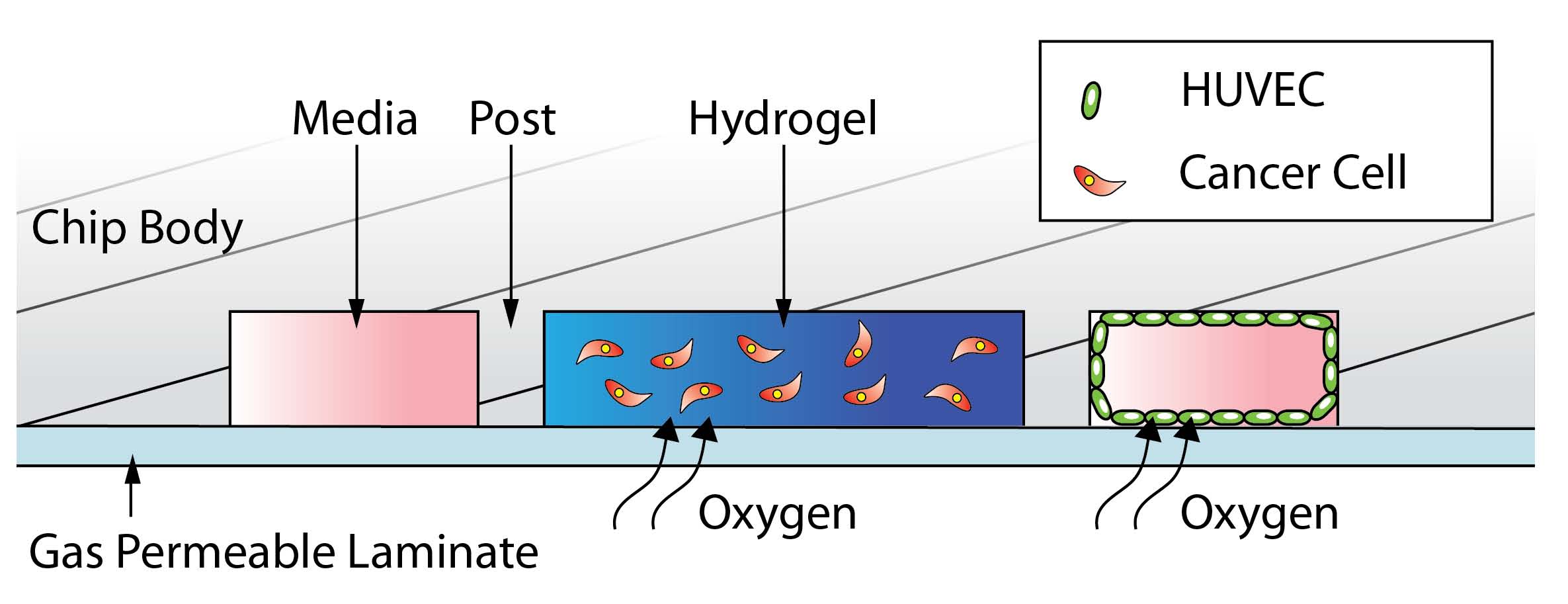
The bottom of the chip is covered with a gas permeable polymer. Through efficient gas exchange process, the oxygen state in the incubator can be accurately presented in the chip.
3. Controllable fluid and chemical concentration gradients
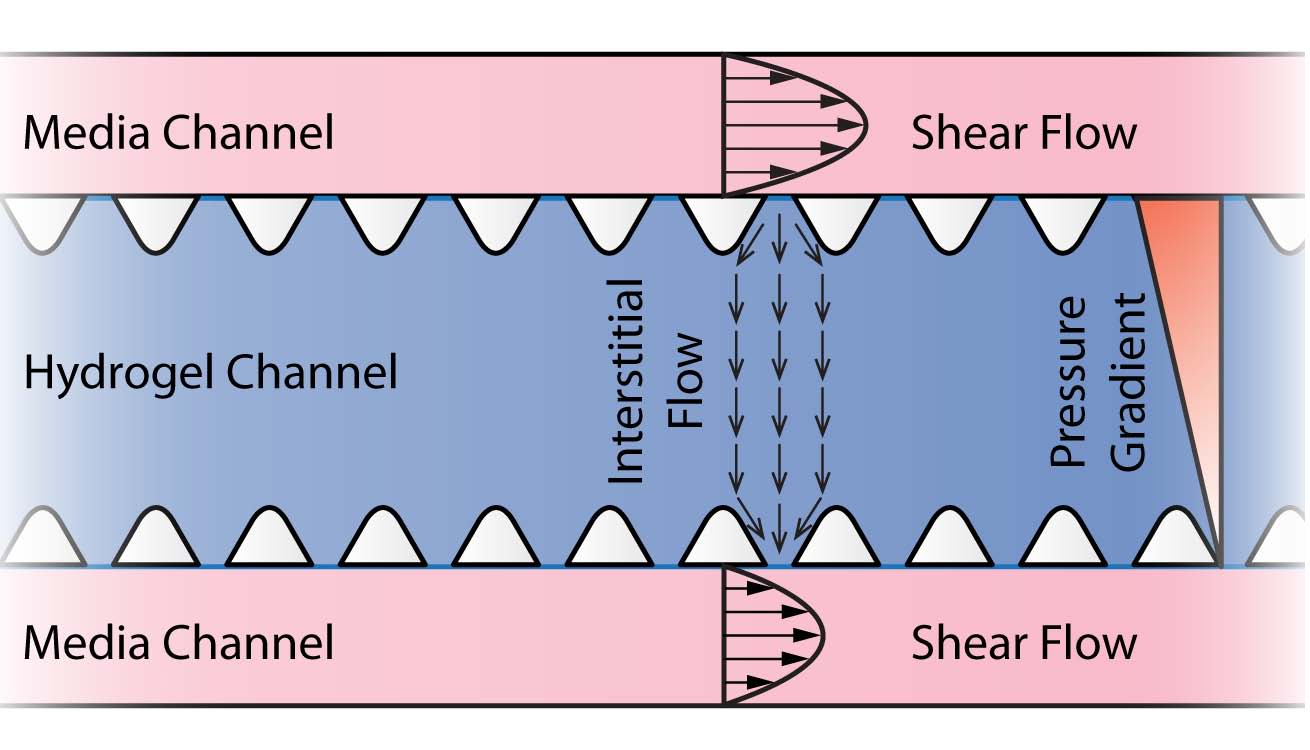
Hydrogel penetrates gaps of the entire AIM chip, and both fluid and chemical concentration gradients can be controlled and adjusted.
4. Unique co-cultivation model
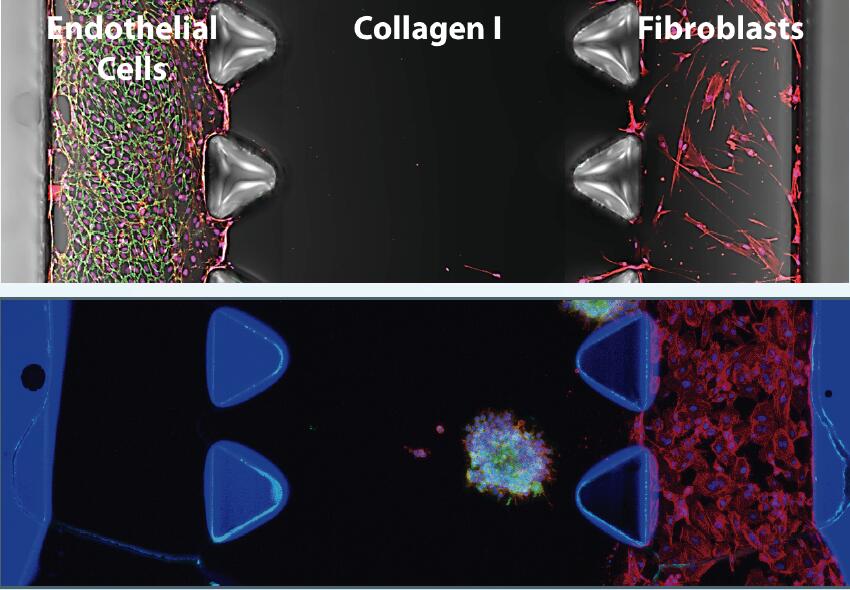
Different types of cells can be cultured in the same channel or they can be separated into different channels.
Additional Characteristics:
Microscope slide size (75mm X 25mm)
Sterile & ready-made
Modular design for more application areas with AIM Luer Connectors
Suitable for 386-well plates (AIM proprietary)
The bottom layer is covered with polymer, with a light transmittance up to 92%, so the chip can be used for phase contrast microscopy, fluorescence microscopy, 2-photon & confocal microscopy
Special groove design allows the medium to be quickly replaced, it without the risk of over-suction even with a vacuum aspirator.
Application
1. Vascular regeneration:
AIM's 3D cell culture chip provides a new perspective for angiogenesis research.
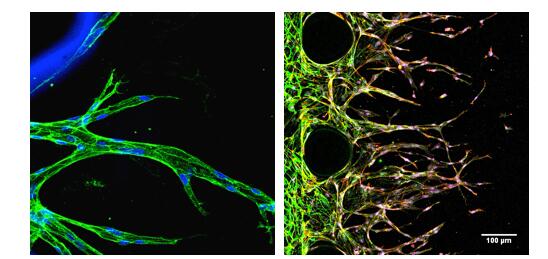
Confocal imaging of endothelial blood vessels
Note: The dynamic vascular growth process can be monitored in detail through a vertical viewing angle.
2. Cancer cell transfer:
The occurrence of cancer cell metastasis is a multi-stage event, including dissemination/invasion, infiltration, and extravasation of cancer cells. The occurrence of each phase can be modeled separately in AIM's 3D cell culture chip.

Spread Infiltration Extravasation
(1) Dissemination: Monitoring distribution of cancer cell spheres, which is used to establish a metastatic model (EMT) that occurs in the early stages of cancer. The cancer cell spheres can be implanted into 3D hydrogel network of the AIM chip and can be co-cultured with other cells, such as endothelial cells, in order to more accurately mimic tumor microenvironment.
(2) Infiltration: Tumor cells enter the circulatory system through infiltration, which is a crucial step in cancer spread. The AIM chip can create an endothelial monolayer close to the tumor microenvironment and then serve as a model for cancer cell infiltration.
(3) Extravasation: AIM chips can simulate complex extravasation processes in vitro. The AIM chip provides users with a micro-environment that closer to physiological state. It can better control key factors affecting extravasation, such as biochemical and biophysical factors.
3. Cell invasion and migration:
AIM's 3D cell culture chip is suitable for cell migration tracking by creating a 3D network, or measuring migration endpoints.
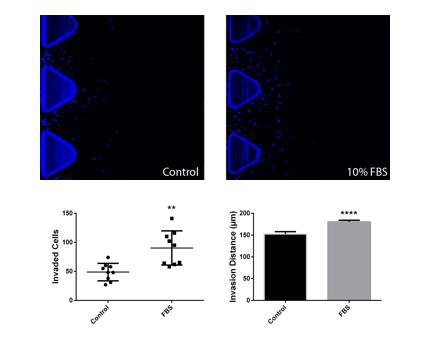
Analysis of cell migration and response induced by FBS
Note: The number of invading cells can be easily determined by calculating the number of cores in selected area. The rate of cell migration can be easily quantified by determining migration distance of cells at a given time.





